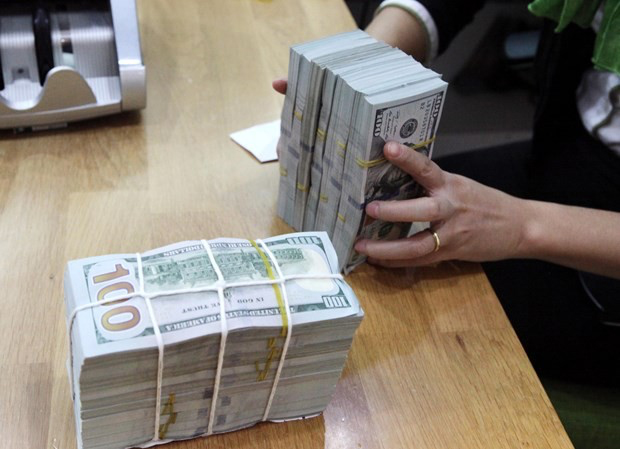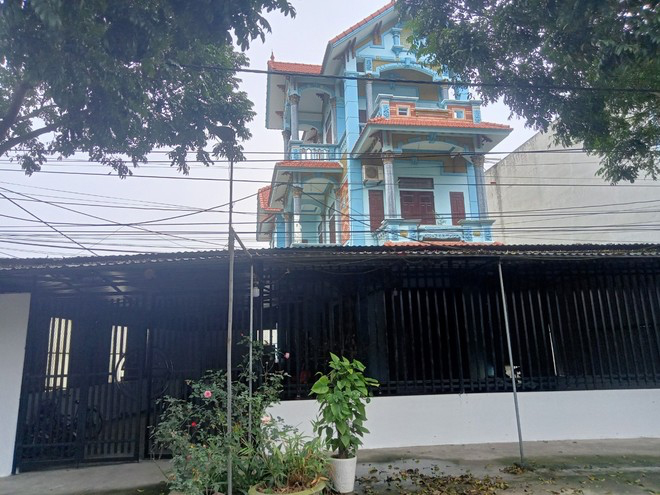
Vietnam is among the top 10 countries receiving the largest remittances. (Photo: Vietnam+)
|
Despite the overall impact of the global economy, remittances to Vietnam still maintain its position in the top 10 countries with the largest remittances in the world. It is estimated that the amount of remittances to Vietnam has reached nearly 16 billion USD. This is considered a high remittance level in the current difficult situation.
Top 10 countries receiving the largest remittances
The Migration and Development Report by the World Bank and the International Organization for Migration (KNOMAD) states that remittances to Vietnam have regularly exceeded 10 billion USD per year since 2010. Especially, in 2023, Vietnam attracted about 14-15 billion USD, ranking among the top 3 countries in the Asia-Pacific region and the top 10 countries in the world in terms of receiving remittances.
Being a major economic center of the country, Ho Chi Minh City has always been the largest recipient of remittances. The leaders of Ho Chi Minh City stated that the estimated remittances to the city reached nearly 9.5 billion USD in 2023, a 43.3% increase compared to the previous year. This is a crucial opportunity and a key resource for the city to recover and develop in the post-COVID-19 period.
According to Nguyen Duc Lanh, Deputy Director of the State Bank of Vietnam’s Ho Chi Minh City branch, remittances to the city have reasons beyond direct factors related to overseas Vietnamese, overseas workers, and global economic growth that impact the incomes of overseas Vietnamese and workers. Seasonal nature also plays an important role, especially during the year-end and traditional lunar New Year holidays.
During each year-end and Lunar New Year holiday, remittance amounts are higher than the average of other months. This factor stems from the sentiments of the majority of overseas Vietnamese towards their homeland, their relatives, and families whenever Tet (Lunar New Year) arrives, sending money to give gifts to family members on the occasion of the year-end, as a tradition of showing gratitude to parents and relatives in the homeland to have a prosperous Tet.
The peak season for remittance transfers usually lasts about a month before and after Lunar New Year. According to the recorded data, the amount of remittances sent domestically during this peak season has significantly increased in terms of both the number of transactions and the amount of money sent for each transaction.
According to the Department of Overseas Labor Administration (Ministry of Labor, Invalids and Social Affairs), the total number of Vietnamese workers working abroad in 2023 is 159,986, reaching 133.3% of the plan. Among them, there are 55,804 females, accounting for nearly 35%.
Previously, the target set for 2023 was to send 110,000-120,000 workers to work abroad.
Japan is still the leading destination for Vietnamese labor, with more than 80,000 people. Following are other main markets that attract many Vietnamese workers such as Taiwan (China) with 58,620 workers; South Korea with 11,626 workers; China with 1,806 workers…
Currently, Vietnam has about 650,000 workers working in 40 countries and territories worldwide, mainly in major markets.
Vietnamese workers working abroad are engaged in various fields and industries, primarily in the manufacturing sector accounting for 80% including (mechanical, textiles, footwear, electronics assembly…); and the remaining are in the construction, agriculture, aquaculture, and service sectors including (elderly care, nursing, domestic helpers). On average, the number of Vietnamese workers going abroad accounts for about 10% of the targeted employment quota.
On average, after working abroad for 3 years, a laborer can accumulate from 500-700 million VND. In general, the average income of Vietnamese workers working abroad is 5 to 8 times higher than their income in the country.
With the accumulated amount of money, many families have lifted themselves out of poverty and built decent houses. After returning to the country, workers have the ability to invest in production and business, and more importantly, their skills and qualifications have become a valuable resource.

With the accumulated amount of money, many families have lifted themselves out of poverty and built decent houses. (Photo: PV/Vietnam+)
|
Ms. Nguyen Thi Thoa (Ly Nhan district, Ha Nam province) said that her family has 2 sons and 1 daughter-in-law currently working in Japan who send back billions of dong each year. Thanks to that, her family has built a garden house worth more than 2 billion dong. Besides, each child has also bought a nice piece of land outside the town to have a place for trading when they return to the country.
“If we didn’t have a regular source of income from our children, life would be very difficult because as farmers, we don’t know how to make money. We only have enough for daily needs,” Ms. Thoa shared.
In addition to that, many rural villages in various provinces throughout the country have “changed their skin and bones” thanks to remittances, such as Bac Giang, Bac Ninh, Vinh Phuc, Thai Binh, Thanh Hoa, Nghe An, Ha Tinh…
An important resource for socio-economic development
According to economic experts, Associate Professor, Dr. Dinh Trong Thinh (Finance Academy), the amount of remittances to Vietnam is increasing. In 2023, the global economy faced difficulties, so the flow of money from Vietnamese people to Vietnam slightly decreased compared to the previous year, but at the level of 14-15 billion USD, it is still high. This is a large capital supplement to the private sector investment in the domestic economy. The money that Vietnamese people abroad send back to their relatives and families for expenses, construction, buying houses… is essential. This has contributed significantly to ensuring the lives of many families and supporting social security within the country.
Agreeing with the above viewpoint, economist Nguyen Tri Hieu assesses that remittances have significantly supplemented Vietnam’s foreign exchange reserves. The increasing flow partly comes from Vietnamese people working abroad who trust in the stability of the domestic economy and see better investment opportunities in the domestic market. The greatest advantage of remittances today is that they do not involve the risks of foreign direct investment (FDI).

Remittances are a driving force for economic development. (Photo: Vietnam+)
|
In addition, this expert also said that stable and flexible exchange rate policies have had a positive impact on the remittances flowing into Vietnam in recent years. “Any investor wants the exchange rate in their country of investment not to fluctuate too much. Because if the exchange rate increases significantly while their income in the Vietnamese market is in dong, they will face disadvantages when they want to transfer money back to their country of residence (abroad),” Mr. Hieu said.
From the perspective of commercial banks, the increasing amount of remittances sent to Vietnam helps them increase revenue from service activities. When remittances are increasingly channeled through banks, the banks will have opportunities to increase attracting deposits by converting foreign currencies into VND, providing additional capital for the economy. Therefore, as expected, in the last two quarters of the year, banks always actively launch many attractive policies to attract this valuable resource.
According to statistics, since commercial banks do not pay interest on foreign currency deposits, more than 70% of remittance recipients convert the money into VND. This helps banks have an abundant foreign currency source to serve production and business development, especially increasing the national foreign exchange reserves and minimizing the dependence on foreign capital.
It is undeniable that remittances are a “golden” resource for economic and social development, but this resource is also prone to flow into risky and speculative areas. Therefore, to promote the role of remittances, experts believe that the Government needs to have policies to continue maintaining macroeconomic stability, curbing inflation, and changing the investment environment in a positive direction.
Especially, according to experts, there should be more policies to direct remittances to flow into production, business, and good investment channels through creating a good and favorable investment environment, as well as developing markets such as corporate bonds, professional securities market, to attract investment.
Thuy Ha





































